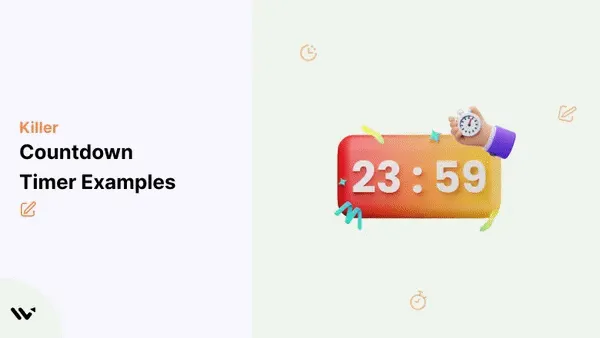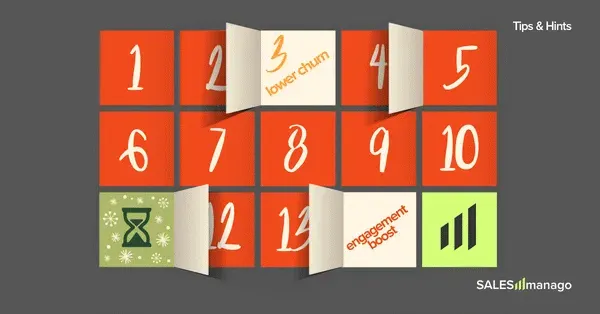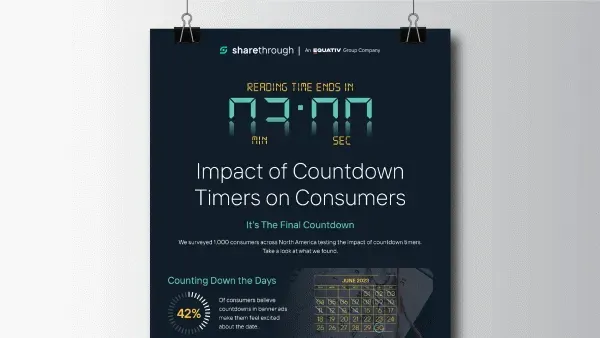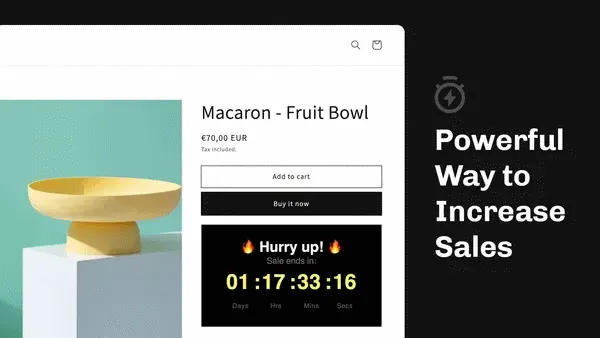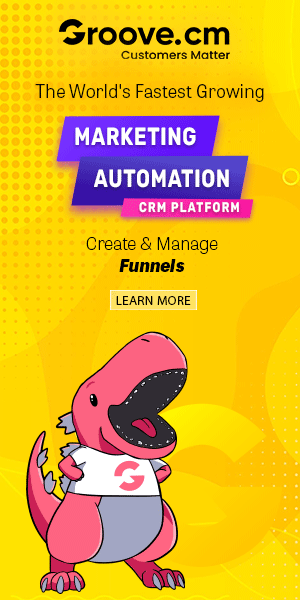Ticking Down to Impact: How Countdown Timers Reshape Digital Advertising Attention
Average Reading Time: 6min.
Table of Contents
- Introduction: Countdown Timers: The Psychological Spark Behind the Tick
- Chapter 1: Beyond the Blind Spot: How Countdown Timers Battle Banner Fatigue
- Chapter 2: CTV Countdown: Memory Triggers in a Streaming-First World
- Chapter 3: Riding the Ethical Edge: Trust, Tricks, and Deceptive Timers
- Conclusion: Countdown Customization: Making Timers Your Brand’s Signature
It all started with a missed sneaker drop. Suddenly, everyone in my group chat was talking about how they nearly snagged an exclusive release—but completely forgot because, well, life got in the way. If only there had been one of those persistent countdown banners screaming '4 hours left!' perhaps we’d all be matching. That little anecdote got me thinking: are countdown timers just eye candy in ads, or do they actually make us pay attention, take action, or maybe even feel something? Turns out, the answer is a tangled mix of psychology, consumer behavior, and some unexpected side effects. Let’s peel back the layers on digital countdowns and see what’s really ticking away beneath the surface.
Countdown Timers: The Psychological Spark Behind the Tick
In today’s crowded digital advertising landscape, capturing consumer attention is a challenge that demands both creativity and science. Enter Countdown Timers—a deceptively simple tool that taps into the core of consumer behavior by leveraging the Urgency Principle and the Scarcity Effect. These timers are more than just ticking clocks; they are psychological triggers that ignite anticipation and urgency, reminiscent of the collective excitement felt on New Year’s Eve, but now applied to the digital shopping cart.
Research shows that 42% of consumers experience a genuine rush of excitement when they encounter countdown banners for sales, product launches, or event premieres. This emotional response is not accidental. Countdown timers operate on deep-set psychological principles, nudging users to engage faster and, often, more impulsively. The ticking clock creates a palpable sense of urgency, compelling users to act before the opportunity slips away.
Become a DigiTimer Affiliate and Start Making Money Today! Signup Here
The impact on impulse buying is particularly striking. According to recent findings, 85% of consumers admit to making spur-of-the-moment purchases when confronted with a sale that’s about to end. The basic urge to take action, triggered by limited-time prompts, is a powerful force in digital advertising. As the VP of Insights, Strategy & Sustainability at Sharethrough puts it:
“Countdowns evoke excitement and create irresistible urgency among digital shoppers.”
But the influence of countdown timers extends beyond just excitement and urgency. They also play a critical role in improving awareness and attention. Sharethrough’s research indicates that display ads featuring a countdown timer saw a 106% increase in awareness of a promotion’s date compared to standard ads. For show premieres, awareness improved by 16%. These numbers highlight how countdown timers not only drive immediate action but also help combat the growing phenomenon of banner blindness by drawing more eyes to the message.
Consumers are also taking proactive steps in response to these prompts. The data reveals that 74% of consumers will set a reminder to watch a show on its premiere date, and 69% set reminders to purchase products before a sale ends. Notably, 59% of consumers prefer time-based reminders over other types, underscoring the effectiveness of countdowns in organizing and motivating action.
In sum, countdown timers are reshaping digital advertising by creating urgency and scarcity, driving higher engagement, and triggering strong emotional responses that influence purchase decisions. Their psychological spark is both immediate and measurable, making them a vital tool in the modern marketer’s arsenal.
Beyond the Blind Spot: How Countdown Timers Battle Banner Fatigue
Digital advertising faces a persistent challenge: banner blindness. As users grow increasingly numb to traditional display ads, even the most creative campaigns can slip by unnoticed. This phenomenon—where habitual scrolling and digital exhaustion render banners invisible—has plagued marketers for years. But recent research points to a promising solution: the strategic use of countdown timers within display ads.
Countdown timers act as powerful pattern interrupters. By introducing a dynamic, time-based visual element, they disrupt the monotony of standard ad formats and reignite consumer attention. Studies indicate that this Countdown Impact is not just theoretical. Real-world data from Sharethrough’s Display Countdown enhancement demonstrates that adding a countdown timer to display ads leads to a remarkable 106% increase in awareness for key promotion dates. That’s not a marginal improvement—it’s a seismic shift in consumer awareness within the crowded digital landscape.
Become a DigiTimer Affiliate and Start Making Money Today! Signup Here
But the benefits extend beyond headline promotions. Countdown overlays have been shown to boost awareness of less-obvious campaign elements as well. For example, Sharethrough’s research found a 16% increase in awareness for show premiere dates when countdown timers were integrated into display ads. This suggests that countdowns don’t just highlight the obvious—they help consumers notice and remember details that might otherwise be overlooked.
Why does this work so well? The answer lies in both psychology and user behavior. A ticking timer taps into the human tendency to respond to urgency and scarcity. It transforms a passive viewing experience into an active one, prompting users to pay closer attention and, often, to take immediate action. As one ad operations lead at CafeMedia put it:
“A subtle timer can turn overlooked banners into instant calls to action.”
Sharethrough’s consumer research backs this up with compelling statistics. Not only do countdown timers increase recall and attention, but they also drive higher interaction rates. In fact, 42% of consumers report feeling excited when they see a countdown in a banner ad, and a significant portion are more likely to set reminders or act on limited-time offers. This measurable uplift in engagement is what sets Display Countdown apart from static formats.
Ultimately, the integration of countdown timers into display ads is more than a design tweak—it’s a strategic move to combat banner blindness and elevate campaign performance. The data is clear: countdowns deliver a tangible boost in consumer awareness and attention, helping brands cut through the digital noise.
CTV Countdown: Memory Triggers in a Streaming-First World
In today’s streaming-first landscape, the battle for viewer attention is relentless. As binge-watching becomes the norm, attention spans drift and traditional digital advertising tactics often fall short. Enter the CTV Countdown—a tool that’s quietly reshaping how networks and advertisers keep their content top-of-mind. Research shows that the CTV Countdown Overlay isn’t just a flashy add-on; it’s a proven memory trigger. In fact, viewers exposed to countdown overlays are 43% more likely to remember when a promotion starts compared to those who aren’t.
This isn’t just about recall. The impact runs deeper into consumer behavior. With so many shows competing for attention, viewers often lose track of premiere dates. However, when a countdown timer appears on screen, it acts as a subtle but effective nudge. Studies indicate that 74% of viewers set calendar reminders for show premieres after seeing countdowns. That’s a significant jump, even outpacing the 66% who set reminders for weekly habits. The countdown overlay bridges the gap between passive digital viewing and real-world action, making it easier for audiences to engage with upcoming releases.
Become a DigiTimer Affiliate and Start Making Money Today! Signup Here
Why does this work so well? The answer lies in the psychological interplay of anticipation and time pressure. Countdown timers tap into our innate response to urgency and scarcity, motivating us to act before time runs out. In the context of digital advertising on connected TV, this translates to higher engagement and improved ad performance. Overlays with timers don’t just grab attention—they help combat the growing problem of banner blindness, ensuring that key promotional messages actually land.
The data backs this up. Not only do countdown overlays boost recall by 43%, but they also foster habit-building among viewers. When tested in CTV-specific environments, overlays led to measurable improvements in memory and increased the likelihood of viewers tuning in for premieres and launches. As one Sharethrough CTV strategist put it:
“Overlays with timers make show launches unforgettable—it’s prime time for prime attention.”
For advertisers and networks navigating the crowded world of streaming, countdown overlays offer a fresh approach. They blend seamlessly into the viewing experience, leveraging the power of sales reminders and time-based cues to drive real engagement. In a space where every second counts, the CTV Countdown is proving to be an essential tool for capturing—and keeping—audience attention.
Riding the Ethical Edge: Trust, Tricks, and Deceptive Timers
Countdown timers have become a staple in digital advertising, leveraging the urgency principle to drive impulse buying and boost consumer engagement. But not all timers are created equal. While many countdowns are genuine, some cross a line—using deceptive tactics that can erode trust and spark negative emotional responses.
Research shows that deceptive timers—those that reset unexpectedly or misrepresent the true end of a promotion—can still influence consumer behavior. In fact, even when consumers suspect manipulation, the ticking clock can push them toward a purchase. This paradox highlights a complex reality: urgency works, but at what cost?
Become a DigiTimer Affiliate and Start Making Money Today! Signup Here
Case studies and consumer research from Sharethrough reveal that audiences are growing more sophisticated. Many can consciously differentiate between fair countdown tactics and those that feel manipulative. When timers are used transparently, they create excitement and anticipation; 42% of consumers report feeling excited when they see a countdown in a banner ad. However, when the tactic feels misleading, skepticism rises. As one digital ethics consultant put it:
“Long-term loyalty trumps quick wins—timers should respect consumer intelligence.” — Digital ethics consultant, AdTech Review
Despite this wariness, the urgency principle remains powerful. Sharethrough’s research found that 85% of consumers have made an impulse purchase because a sale was ending soon. Even when timers are questionable, some consumers still act, revealing a nuanced interplay between awareness, skepticism, and action. This complexity means that while deceptive timers can drive short-term sales, they risk long-term brand reputation—an increasingly important consideration as trust-based advertising becomes a consumer demand.
The emotional response to deceptive timers is not uniform. Some users feel manipulated, which can foster resentment or disengagement. Others may rationalize the tactic as “just marketing,” proceeding with their purchase regardless. Still, the risk is clear: abused urgency can break trust, and once lost, trust is difficult to regain.
As digital advertising evolves, ethical lines are more important than ever. Consumers are savvier, and their expectations are rising. Brands that prioritize transparency and respect for consumer intelligence are more likely to foster sustainable engagement. In the end, the choice between short-term gains and long-term loyalty remains at the heart of the countdown timer debate.
Countdown Customization: Making Timers Your Brand’s Signature
Countdown timers have become a powerful tool in digital advertising, but their true impact emerges when brands take customization seriously. In today’s crowded online landscape, consumers are bombarded with display ads—many of which blend into the background, suffering from what’s known as banner blindness. Customizing countdown timers offers a way to break through that noise, transforming a simple ticking clock into a dynamic extension of your brand’s identity.
Research shows that 59% of consumers prefer time-based reminders over location or event-based alternatives, highlighting a shift in how people organize their lives and respond to digital prompts. This preference aligns perfectly with the role of countdown timers in display ads, especially when those timers are tailored to fit the brand’s voice, colors, and messaging style. As a Sharethrough product designer aptly put it:
“A good countdown shouldn’t just tick—it should speak in your brand’s voice.”
Brands that treat each countdown as a mini digital event—rather than just a functional deadline—see stronger engagement. Instead of a generic timer, imagine a countdown that uses your brand’s palette, incorporates your logo, and echoes the tone of your campaign. This approach doesn’t just create urgency; it builds anticipation and strengthens brand recall. Sharethrough’s own Display Countdown enhancement is a prime example, allowing advertisers to easily activate branded timers by simply providing creative IDs and end dates. The result? Ads that not only demand attention but also feel unmistakably “you.”
Personalization is more than a trend—it’s an expectation. When consumers see a countdown timer that feels exclusive or tailored, it fuels a sense of attention and urgency that generic messaging can’t replicate. Studies indicate that such customization can directly enhance engagement and conversion rates, as consumers are more likely to act when they feel a campaign is speaking directly to them. Sharethrough’s ongoing growth and client satisfaction underscore the value of tuning timers to match audience preferences and brand identity.
Ultimately, the most effective countdown timers are those that blend urgency with identity. They don’t just mark time—they create moments. As digital advertising continues to evolve, brands that invest in countdown customization will find themselves not only capturing attention but also building deeper, more memorable connections with their audiences. In the world of limited time offers and sales reminders, making your timer your signature could be the difference between being noticed and being ignored.
For more information on DigiTimer.CC, you can check out the following URL:
- Website (Product Information): https://digitimer.cc
- JV Website (JV Information & Signup): https://digitimer.cc/jv
- Community: (Questions, Details, etc): https://community.digitimer.cc/
Become a DigiTimer Affiliate and Start Making Money Today! Signup Here
P.S. Don't forget to follow us on social media, the community, the website and the - - YouTube channel for even more inspiration and updates!
- Website: https://thereviewshed.cc
- Website: https://van-santen-enterprises.com
- Community: https://community.van-santen-enterprises.com
- Marketing Courses: https://thetraininghub.cc
- The Store: https://van-santen-enterprises.cc
- YouTube Channel: @VanSantenEnterprises
To Learn more about "Digital Marketing" or to stay informed, subscribe to the free newsletter or community.
CountdownTimers, #EcommerceMarketing, #ShopifyApps, #FOMO, #BoostSales, #UrgencyWorks, #MarketingStrategy, #CustomerEngagement, #DigitalRetail, #ShopifyTips
TL;DR: Countdown timers in digital advertising trigger urgency, spike attention, and significantly bump consumer awareness—but with great power comes the need for ethical, thoughtful use.


